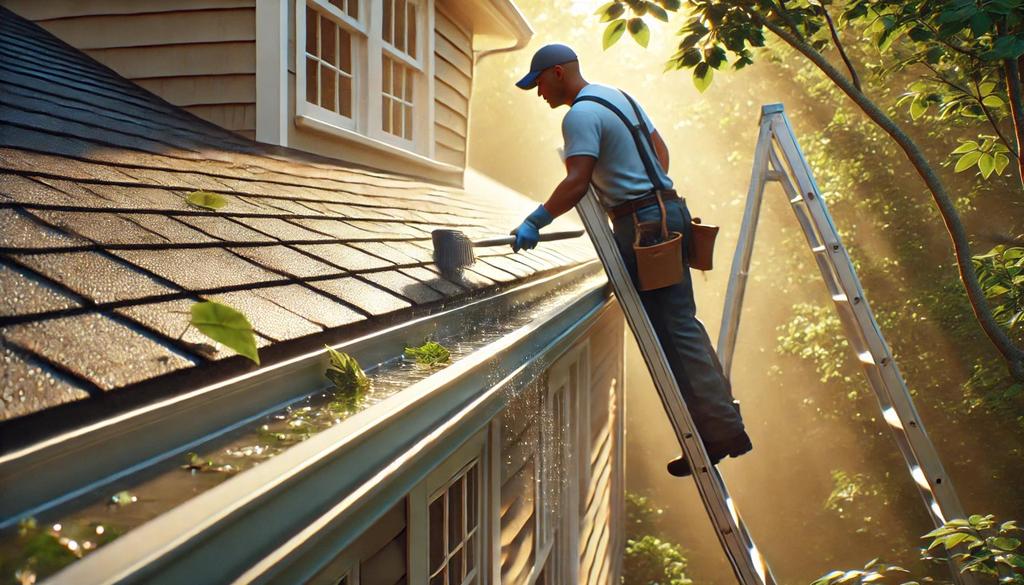
Your roof protects your home from the elements and ensures your family’s comfort and safety. Regular roof maintenance can prevent costly repairs, extend the lifespan of your roof, and maintain your home’s structural integrity. Here’s what you need to know about keeping your roof in top shape.
As a homeowner, it’s essential to prioritize roof maintenance to ensure the longevity and integrity of your home. A well-maintained roof not only protects your home from the elements but also saves you money in the long run by preventing costly repairs. In this article, we’ll provide you with essential roof maintenance tips to help you keep your roof in good condition. By following these tips, you can ensure that your roof remains a strong and reliable barrier against the weather, safeguarding your home and family.
Routine inspections help identify minor issues before they become major problems, allowing for timely minor repairs. It’s best to check your roof at least twice a year—once in the spring and once in the fall. Use binoculars to assess its condition from the ground if climbing isn’t an option.
What to Look For:
It’s also beneficial to check after extreme weather events, such as heavy storms, high winds, or snowfall, to assess any damage.
Clogged gutters can lead to water buildup, which can damage your roof and cause leaks. Regularly clear out leaves, twigs, and other debris, especially after storms. Ensure that water flows freely and directs away from your home’s foundation. Including gutter cleaning in your roof maintenance checklist ensures that water flows freely and directs away from your home’s foundation.
Steps for Gutter Maintenance:
Consider installing gutter guards to minimize debris accumulation and reduce maintenance time.
Trees near your home can pose a risk to your roof. Overhanging branches can scrape against shingles and cause damage, while fallen limbs can lead to serious structural problems.
Benefits of Trimming:
Hire a professional if the tree limbs are large or require specialized equipment to avoid injury or further damage.
Moss and algae can cause roofing materials to deteriorate over time. If you notice green patches or dark streaks, consider using a moss-killing solution or installing zinc or copper strips along the roof’s ridge to prevent growth.
Methods for Removal and Prevention:
Avoid pressure washing, as it can damage shingles and reduce their lifespan.
Water stains on ceilings and walls inside your home can indicate a roof leak. Inspect your attic for signs of moisture, mold, or rot. Address any issues promptly to prevent further damage.
Common Leak Sources:
Early detection can save you from expensive structural repairs down the line.
A well-ventilated attic helps regulate temperature and prevents excessive moisture buildup, which can lead to mold and wood rot. Check that your attic has sufficient insulation and ventilation to keep your roof in optimal condition.
Ventilation and Insulation Tips:
Proper insulation also prevents heat loss, reducing energy costs and improving home efficiency.
If you notice loose or damaged shingles, flashing issues, or small leaks, take immediate action as part of your regular roofing maintenance. Ignoring minor problems can lead to costly repairs or even the need for a full roof replacement down the line.
DIY vs. Professional Repairs:
While DIY inspections are valuable, hiring a professional roofer for an annual inspection ensures a thorough assessment of your roof’s condition. Roofing experts can identify hidden issues and provide maintenance recommendations to extend your roof’s lifespan.
What Professionals Look For:
A professional inspection can help you plan for future repairs and avoid emergency situations.
Proactive roof maintenance is key to protecting your home and avoiding expensive repairs. By performing regular inspections, cleaning gutters, trimming branches, and addressing issues early, you can extend the life of your roof and maintain a safe and comfortable home.
Key Takeaways:
If in doubt, always consult a professional to ensure your roof remains in excellent condition for years to come. Investing in maintenance today can save you from costly repairs in the future.